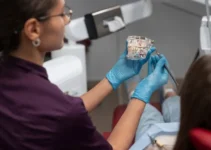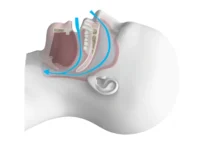Teeth whitening has become a popular cosmetic procedure for achieving a brighter smile. Various methods, ranging from professional treatments at a dentist’s office to at-home DIY kits, offer solutions tailored to different needs and budgets. This article explores the benefits of teeth whitening, including enhanced self-confidence and improved oral health appearance, as well as the common techniques used such as bleaching gels, whitening strips, and laser treatments. We also examine the considerations one should make regarding safety and effectiveness when choosing a teeth whitening method.
Benefits of Teeth Whitening
Teeth whitening is a popular cosmetic dental procedure that offers a range of benefits. From improving one’s appearance to enhancing mental well-being, the advantages of having a brighter smile are numerous and well-documented.
This article explores the key benefits of teeth whitening, supported by scientific studies and expert opinions. Whether you’re considering an in-office treatment or an at-home solution, understanding the potential outcomes can help you make an informed decision.
Enhanced Appearance
One of the most immediate and noticeable benefits of teeth whitening is an improved appearance. A brighter smile can make a person look younger and more vibrant. Discolored or stained teeth can detract from your overall look, while whiter teeth can enhance your facial aesthetics.
In studies, participants with whiter teeth were often perceived as more attractive and healthier than those with stained teeth. This is because a bright smile is often associated with good health and hygiene. Tooth discoloration can occur due to various factors, including coffee, tea, wine, and smoking, making teeth whitening a highly sought-after solution for a fresher look.

Teeth whitening treatments can effectively remove surface stains and even lighten deeper discolorations. The result is a natural, radiant appearance that can have a significant impact on your overall look.
Boosts Self-Esteem
Another significant benefit of teeth whitening is the boost it can provide to your self-esteem. Having stained or discolored teeth can make individuals feel self-conscious, leading to a reluctance to smile or speak freely. This self-consciousness can affect personal and professional interactions.
Whiter teeth can act as a confidence enhancer. Surveys have shown that individuals with brighter smiles feel more confident and are often more willing to engage in social activities. This boost in self-esteem can have far-reaching effects, from better performance at work to more fulfilling personal relationships.
Moreover, the psychological impact of a brighter smile shouldn’t be underestimated. Feeling good about one’s appearance can lead to a positive outlook on life, further enhancing one’s mental well-being.
Improves Oral Health
While teeth whitening is primarily a cosmetic procedure, it can also have indirect benefits on your oral health. Many people become more mindful of their dental hygiene after a whitening treatment, leading them to adopt better care practices. Increased attention to brushing, flossing, and regular dental checkups can contribute to overall oral health.
Some whitening products also include ingredients that can help strengthen enamel and reduce sensitivity. This can be an added advantage for those who experience discomfort with hot or cold foods.
In addition, removing surface stains through professional whitening treatments can sometimes make it easier to identify more serious oral health issues like cavities or decay, which may have been masked by discoloration. Early detection of such issues allows for timely treatment, potentially avoiding more complex and costly procedures down the line.
Understanding the multifaceted benefits of teeth whitening can help you appreciate the procedure beyond its cosmetic rewards. For more insights, consider reading our other articles on oral health and cosmetic dentistry.
Popular Teeth Whitening Methods
Teeth whitening has become one of the most sought-after cosmetic dental treatments. With various methods available, individuals can choose the best option based on their preferences, budget, and the level of whitening desired. In this article, we explore some of the most popular teeth whitening methods, including professional in-office treatments, at-home whitening kits, and whitening toothpaste. Understanding the strengths and limitations of each method can help you make an informed decision. Always consult with a dental professional before starting any teeth whitening regimen to ensure safety and effectiveness.
In-Office Whitening
In-office teeth whitening is a professional treatment performed by a dentist. It is known for its efficacy and quick results. During this procedure, a high-concentration peroxide gel is applied to the teeth, which is then activated by a special light or laser. The entire process typically takes about an hour and can achieve results that are several shades lighter.
One of the main advantages of in-office whitening is its immediate and dramatic results. This method is ideal for individuals seeking a fast solution for a special event or those with severe discoloration. However, it is also one of the more expensive options available, costing several hundred dollars per session.
Patients may experience some sensitivity during or after the treatment, but this is usually temporary. Your dentist can provide guidance on managing any discomfort and maintaining the results with proper oral hygiene and follow-up treatments.
At-Home Whitening Kits
At-home whitening kits are a popular alternative to professional treatments, offering convenience and affordability. These kits typically include custom or semi-custom trays and a lower concentration peroxide gel. Users apply the gel to the trays and wear them for a specified period, usually between 30 minutes to a few hours each day, over several weeks. While at-home kits may not deliver immediate results like in-office treatments, they can still achieve significant whitening over time. This method allows for gradual improvement, which some users prefer as it can lead to less tooth sensitivity.
It’s important to follow the instructions provided with the kit to avoid overuse or misuse, which can lead to adverse effects such as increased sensitivity or gum irritation. Consulting with a dentist before using at-home kits can help ensure that the product is safe and suitable for your individual needs.
Whitening Toothpaste
Whitening toothpaste is one of the easiest and most cost-effective ways to maintain a brighter smile. Unlike professional treatments or kits, whitening toothpaste does not contain peroxide. Instead, it uses mild abrasives and polishing agents to remove surface stains from the teeth.
While whitening toothpaste can help prevent new stains and maintain the results of other whitening treatments, it typically does not produce dramatic changes on its own. Its effectiveness is best for minor surface stains caused by foods, drinks, or smoking.
For optimal results, it’s essential to use whitening toothpaste as part of a comprehensive oral hygiene routine. Brushing at least twice a day, flossing daily, and visiting your dentist regularly contribute to overall oral health and a brighter smile.
Whether you choose in-office treatments, at-home kits, or whitening toothpaste, each method has its unique benefits and considerations. Explore our other articles to learn more about maintaining dental health and achieving a radiant smile.
Precautions and Possible Side Effects
When considering dental implants and bone regeneration procedures, it is important to be aware of potential precautions and possible side effects. While these procedures are generally safe and have high success rates, understanding the risks can help in making informed decisions. This section will delve into common concerns such as sensitivity issues, gum irritation, and overuse concerns.
Proper planning and consultation with a qualified dental specialist can help mitigate these risks. Comprehensive preoperative assessments and following post-operative care instructions play a crucial role in minimizing complications. By being aware of the potential side effects, patients can take proactive measures to ensure a smooth recovery.
Sensitivity Issues
One of the most common side effects following dental implant procedures is sensitivity. Patients may experience sensitivity to hot or cold foods, which can last for several weeks. This sensitivity is often due to the healing process and the integration of the implant with the bone.
To manage sensitivity, dentists often recommend using toothpaste designed for sensitive teeth and avoiding extremely hot or cold foods. Over time, as the implant stabilizes and the surrounding tissues heal, sensitivity typically decreases. However, if sensitivity persists, a follow-up appointment with your dental specialist is advised.
In some cases, sensitivity can indicate other issues such as improper implant placement or infection. Therefore, it’s important to monitor the condition and report any abnormal or prolonged discomfort to your dentist promptly.
Gum Irritation
Gum irritation is another potential side effect of dental implants and bone regeneration procedures. This irritation can result from surgical trauma, plaque build-up around the implant, or an ill-fitting prosthetic. Symptoms may include redness, swelling, and bleeding around the implant site.
Maintaining excellent oral hygiene is critical in preventing gum irritation. Regular brushing, flossing, and using an antimicrobial mouthwash can help keep the area clean and reduce the risk of infection. Additionally, regular dental check-ups are essential to monitor the health of the gums and the implant.
If gum irritation does occur, your dentist may recommend professional cleaning or adjustments to the implant or prosthetic. In severe cases, interventions such as antibiotics or minor surgical corrections may be necessary.
Overuse Concerns
Dental implants are designed to be durable and withstand normal chewing forces, but overuse or improper use can lead to complications. Abnormal pressures from habits such as teeth grinding or using the teeth to open objects can damage the implant or surrounding structures.
Patients with a history of bruxism (teeth grinding) may require a night guard to protect their implants from excessive forces during sleep. Additionally, avoiding actions that place undue stress on the teeth, such as biting on hard objects, can help prolong the life of the implant.
Regular follow-up visits with your dental specialist allow for the monitoring of implant integrity and early identification of potential problems. By adhering to recommended care guidelines, patients can maximize the longevity and success of their dental implants.
Understanding the precautions and possible side effects associated with dental implants and bone regeneration allows patients to take proactive steps in their oral care journey. For more detailed information on related topics, feel free to explore our other articles and expand your knowledge.
Common Questions About Teeth Whitening
Let’s explore some frequently asked questions concerning teeth whitening, helping to clarify common concerns and provide useful insights.
What is the safest method of teeth whitening?
The safest method of teeth whitening is typically a professional treatment administered by a dentist. This ensures that the whitening procedures are performed correctly and safely, using approved products that minimize the risk of tooth sensitivity or damage to the enamel. Additionally, your dentist can tailor treatments to your specific needs, providing effective and long-lasting results.

My name is Salman Kapa, a 73-year-old expert in bone regeneration and dental implantology. With decades of experience in the field, I am dedicated to advancing our understanding of oral health and hygiene. Through my research and writing, I aim to contribute to the development of innovative solutions in dental care.




